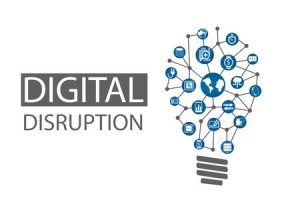 We live in the age of big data and the Internet of Things (IoT). Did you know that since the start of this Millennium, 52% of Fortune 500 companies are gone? What happened? They didn’t make the digital shift that occurred during and after the dot-com bubble. Today, companies need to be a part of the next shift, driven by big data and IoT. Those that don’t will go the way of those nonexistent 52%. What does it mean to shift towards big data and IoT? Your digital business model should focus on CX: Customer Experience. Provide your customer with an excellent interaction, whatever your industry.
We live in the age of big data and the Internet of Things (IoT). Did you know that since the start of this Millennium, 52% of Fortune 500 companies are gone? What happened? They didn’t make the digital shift that occurred during and after the dot-com bubble. Today, companies need to be a part of the next shift, driven by big data and IoT. Those that don’t will go the way of those nonexistent 52%. What does it mean to shift towards big data and IoT? Your digital business model should focus on CX: Customer Experience. Provide your customer with an excellent interaction, whatever your industry.
Have you heard about digital disruption? Along with big data and IoT, this is another buzzword today, because it’s making waves in many different industries. Well-known examples include AirBnB and Uber. They’ve provided a more sought-after customer experience than the existing model in their industries and people jumped on their services. Did you know that the iPhone was a big digital disruption? Its release destroyed 27 business models: cameras, flashlights, digital records and so on.
Digital disruption is what happens when traditional business models don’t prepare for shifting markets by creating digital business models. How might your industry be disrupted? Has it already been?
Customers no longer look for companies that simply sell a product or provide a service. They want brand promises. You are committing to your customers what you will deliver to them. Perhaps you’ve heard of a few of these best brand promises?
-
Geico: “15 minutes or less could save you 15% or more on car insurance.”
-
BMW: “The ultimate driving machine.”
-
Apple: “Think different.”
Why does a brand promise matter? Because our market is now an “attention economy.” With so many things demanding our time and so much coming at us constantly, between TV, social media, advertising and our constant go-go-go schedules, our time has become a scarce commodity. Customers take brand promises seriously and you’ll quickly lose credibility if you’re not consistent.
In order to deliver consistently, you need the data to keep tabs on your customers’ expectations. Take Uber, again, as an example. They’ve disrupted unit cost pricing models by updating their prices based on real-time demand.
So what might you need to include in your digital business plan?
-
Dynamic pricing models
-
Data (clicks, touchpoints, IoT info, etc)
-
Insight streams (built on your data)
If you can integrate all three, call yourself a digital winner. Who are winner companies today? Apple, Amazon, Google and Microsoft vertically integrate them all. Amazon, for example, is keeping the postal service busy while competing against other shipping companies.
So start today with defining your customer, defining your brand and translating it into your digital business model. Disruption is coming. Either you’ll be hit by it, or you’re leading it.

 Ron Ross is somebody that you might consider a superstar in the arena of cybersecurity. His lengthy resume includes leading the task force that developed the Unified Information Security Framework for the federal government.
Ron Ross is somebody that you might consider a superstar in the arena of cybersecurity. His lengthy resume includes leading the task force that developed the Unified Information Security Framework for the federal government.